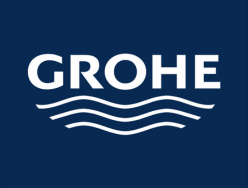
Did London fail her... Or was the death of her husband a catalyst for decline?
(Image: Dora Gordine's gallery at Dorich House with Iran/Goddess of Health 1932-1933)
Richard and I are Kingston Alumni, as students we would glimpse an unusual brick house from Richmond Park, writes Lynne Bryant.
Despite its dilapidation and it being obscured by self-seeded sycamores, I could see and loved its pink drainpipes. Little did we know as students that the abandoned looking park side house was still occupied.
It wasn't until in 1988 we read in the Surrey Comet, a local paper, the printed headline 'Sadness for loss of Russian Treasures' 'treasures stolen from an art gallery in Kingston Vale' that we realised, this was the house with the pink drainpipes.

Dorich House Kingston Vale
Dora Gordine, 1895 -1991.
A citizen of Estonia and later the UK, she trained in St Petersburg, Dora was a figurative sculptor of people.
Dora spent time in Tallin, Berlin and Singapore before, in 1925, she settled in Paris. There she received critical acclaim as one of the finest sculptors of the generation. During the Paris years she travelled extensively within Southeast Asia. Such was her success she was able to commission Auguste Perret to design her a studio house. It was her meeting with, and eventual marriage to, the aristocratic academic and diplomat Richard Hare that brought her to London. Long before their marriage Hare had admired her work and bought one of her pieces, Javanese Head, which, in 1931, he donated to, and it was gratefully received by, the Tate Gallery.
To illustrate the context, Barbara Hepworth was a contemporary and it was not until 1949 Hepworth's first piece was acquired by the Tate.
Kingston Vale won over the alternative site in Highgate for Gordine and Hare to build their studio and home.
Having strong ideas but no architectural training the pair worked with a local builder/surveyor to meet local planning laws while Hare acted as project manager. The lower floors providing studios for Gordine and a study for Hare. Hare was a diplomat and academic becoming an expert and collector of Imperial Russian art.

The apartment on the top floor where they lived and entertained
Dorich House, (Dorich - Dora & Richard) became a meeting place for diplomats, cultural and aristocratic contacts. Gordine was a consummate believer in hospitality and sharing cultures, she mixed menus from her Russian heritage with those of many places she had lived and visited. The press not only followed Gordine's artistic endeavours but in the 1950's contemporary lifestyle magazines and the BBC Far Eastern service described her, in today’s parlance, as a 'domestic goddess'.

'Power ' a commission from Esso for the refinery at Milford Haven in 1960 and four heads
From 1936 to 1965 life was busy and exciting for the couple. Gordine working with private, public, commercial and institutional clients and works being acquired for public collections
around the world. Hare was being feted for his book 'The Art and Artists of Russia', a book recommended in 1965 by The Times ,..' with exceptionally clear and fine illustrations'.
Richard Hare died suddenly of a heart attack in 1966.
Hare was her rock, her love and a facilitator, allegedly utilising his diplomatic skills and contacts to seize opportunities for Gordine's talent.
Fashions change, people move on - would Dora Gordine have slipped so easily into obscurity had Hare not died - or perhaps had they not left Paris?

The Plaster Studio.
Godine had, since Hare's death, tried to find support for the house, studio and collections to be preserved but the V&A, National Trust and others were either too slow or declined. She tried to form a charitable trust but no one was interested without her offering a substantial endowment. In her nineties, and in the hope of raising awareness of Dorich House and its treasures, in 1987 Gordine opened the house giving tours to the public.
The effect of opening the house was not the one she hoped for and in 1988 thieves broke in and stole around 100 Russian treasures. This made headlines in local news outlets and created positive interest.
Gordine died in 1991, Professor Jack Lewin had known Gordine and the Gordin family (note Dora added the 'e'), a governor of Kingston University (then a Polytechnic), he suggested the University might take over Dorich House. In 1994 Kingston formally took over the house and its restoration, breathing new life into the lost world of Dora Gordine and Richard Hare.

Dorich House Museum 67 Kingston Vale, SW15 3RN dorichhousemuseum.org.uk
Dorich House was given Grade-II listing in 1983.
Musings from my life in photography and architecture ©Lynne Bryant
All photographs ©Richard & Lynne Bryant. They may not be downloaded, scraped or copied in anyway
without prior permission from Richard Bryant and negotiation of a licence.
Founder Partner






